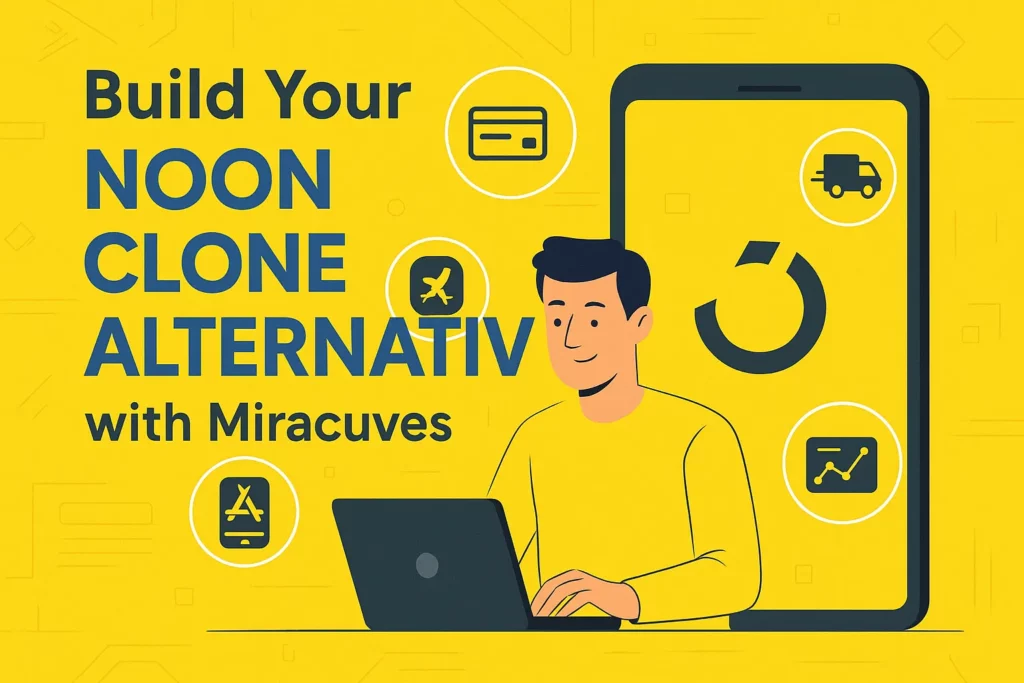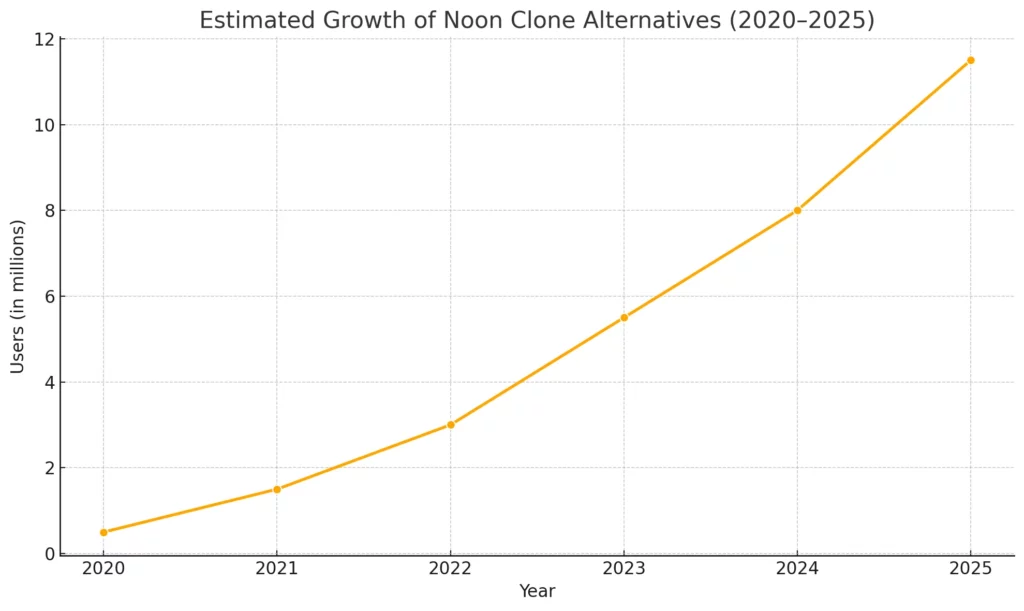If you’re dreaming of launching an eCommerce business in 2025, you’ve probably heard of Noon.com—the Middle East’s answer to Amazon. It’s sleek, mobile-first, COD-friendly, and deeply localized. But here’s the twist: Noon’s success isn’t just inspiring shoppers—it’s inspiring startups. Everyone from bootstrapped entrepreneurs to retail giants is looking to build their own Noon alternative. And not just to copy it—but to compete, adapt, and dominate niche markets that Noon hasn’t fully tapped into yet.
I still remember ordering my first package from Noon back in 2021 while I was in Dubai. The experience felt fast, local, and incredibly tailored—way more intuitive than Amazon. That moment stuck with me. Why? Because I realized that the tech, design, and operations behind Noon could be replicated—not identically, but innovatively. And now, with better tools, smarter logistics APIs, and cloud-powered scalability, developing a Noon-like platform is totally within reach.
In this blog, you’ll get a playbook on How to build your Own Noon alternative. We’ll cover key features (beyond the obvious), target audiences, essential tech stacks, user experience strategies, revenue streams, and even region-specific advice. Whether you’re planning to launch in India, Egypt, or Saudi Arabia—this guide has something for you.
So if you’re here to build something big—or just curious how others are pulling it off—stay with me. This isn’t a code dump. It’s a strategy-packed walk-through for founders who want to own the future of eCommerce.
What Sparked the Rush to Build Noon Alternatives?
Here’s the deal: Noon figured out something global players didn’t. It wasn’t just about having more products or faster delivery—it was about hyper-local trust. Noon localized everything from payment options (COD, local wallets) to UI/UX (Arabic RTL support) to logistics partnerships (same-day delivery in Gulf cities).
But Noon doesn’t serve every region. And it doesn’t cover every niche. That’s where the opportunity lies.
Startups realized they could:
- Build regionalized marketplaces in under-served Tier-2 cities
- Focus on niche verticals like fashion, electronics, or groceries
- Offer a better seller experience with lower fees or more autonomy
Noon opened the door. But alternatives? They’re kicking it wide open.
Top 10 Features to Include in Your Noon Alternative
1. Multilingual, Mobile-First Interface
- Arabic, Hindi, Urdu, English toggles
- RTL-ready UI
- App-first design for Android and iOS
2. Multi-Vendor Marketplace Engine
- Seller onboarding dashboard
- Commission setup tools
- Order lifecycle tracking
3. Seamless Checkout System
- COD, UPI, cards, and regional wallets (e.g., STC Pay, PhonePe)
- Address autocomplete
- One-click reorder
4. Smart Logistics & Fulfillment
- Zone-based shipping pricing
- Real-time delivery tracking
- Rider assignment logic
5. Product Discovery Tools
- AI recommendations
- Voice search in regional languages
- Flash sale and trending tabs
6. Seller & Inventory Management
- Low-stock alerts
- Batch uploads
- Seller performance scores
7. Powerful Admin Panel
- Advanced analytics dashboard
- Vendor approval queue
- CMS for homepage banners, offers
8. User Loyalty Engine
- Reward points
- Wallet cashbacks
- Gamified daily check-ins
9. Creator Integration
- Influencer storefronts
- Affiliate tracking tools
- Shoppable video feed (yes, like TikTok + shopping)
10. Localization Toolkit
- GST, VAT, ZATCA compliance
- Delivery SLA per zoneSMS & email templates in local language
Read Also: Best Noon Clone Scripts | Features & Pricing Compared
Choosing the Right Platform for Your Use Case
For Niche Entrepreneurs:
Use pre-built Noon clone scripts (like those from Miracuves, Codecanyon, or Webkul) with custom branding and a narrow focus—like beauty, fashion, or electronics.
For Full-Stack Startups:
Start with a custom Laravel + Flutter stack or MEAN/Node.js backend. Use Firebase/Redis for real-time activity and AWS for elastic scaling.
For Brick-and-Mortar Retailers:
Integrate POS with eCommerce market using Noon clone modules and sync in-store inventory with app listings.

Feature Comparison Table
| Feature | Noon Clone | Amazon | Shopify Store |
|---|---|---|---|
| Regional UX/UI | High | Medium | Low |
| Seller Commission Control | Yes | No | Yes |
| COD & Local Wallets | Yes | Limited | Requires Plugin |
| Quick Launch | 4–6 weeks | N/A | Immediate |
| Best For | Regional Marketplaces | Global Shoppers | Single-Brand Stores |

Challenges in Developing a Noon Alternative for Business
- Logistics Burn Rate:
Fast delivery means high costs. Start with fewer zones and scale smart. - Inventory Management:
Don’t rely on Excel. Use smart APIs to sync seller stocks in real-time. - Trust & Support:
No one likes shady listings or late refunds. Build strong policies and fast support. - Scalability:
App lag during sale events? Not cool. Invest in performance from day one. - Creator Onboarding:
Want influencer-powered sales? Build a simple UI for them to list and promote.
Learn More: Why Startups Prefer Our Noon Clone Over Custom Apps
Conclusion
Noon changed the game—but you can change the rules. If you’re targeting a regional market or niche category, building a Noon alternative is more than just possible—it’s strategic.
Expect the next wave of platforms to include:
- AI for real-time demand forecasting
- Social shopping with influencer storefronts
- Voice & WhatsApp commerce
- Micro-warehousing for instant delivery
And here’s the thing: you don’t have to build from scratch.
Miracuves offers a fully customizable, feature-rich Noon clone solution that’s perfect for entrepreneurs and brands ready to enter the eCommerce market fast. Whether you need Arabic UX, multi-vendor capability, or custom payment integrations—Miracuves has you covered. Their tech is solid, support is reliable, and deployment is quick. It’s a smart shortcut to launching a serious competitor in your region.
So go build. Your clone doesn’t need to look like Noon. It just needs to solve real problems—better.
FAQ’s
Q1: Is it legal to build a Noon clone?
Yes, as long as you don’t copy trademarks or copyrighted designs. You’re building similar functionality, not identity theft.
Q2: How long does it take to launch a clone?
A pre-built Noon clone can be live in 4–6 weeks. Custom solutions may take 3–6 months.
Q3: What’s the best tech stack?
Laravel + Flutter is popular for startups. Node.js with React Native works well for larger teams.
Q4: Can I integrate local payment gateways?
Absolutely. Look for APIs like Razorpay, PayTabs, PayU, and region-specific wallets like STC Pay.
Q5: Do I need my own logistics service?
No, but you’ll need integration with third-party APIs like Shiprocket, Postpay, or Fetchr.
Q6: How much does a Noon clone cost to build?
$7,000 to $25,000 for MVPs. Enterprise-grade apps can go beyond $50,000+ depending on features.








